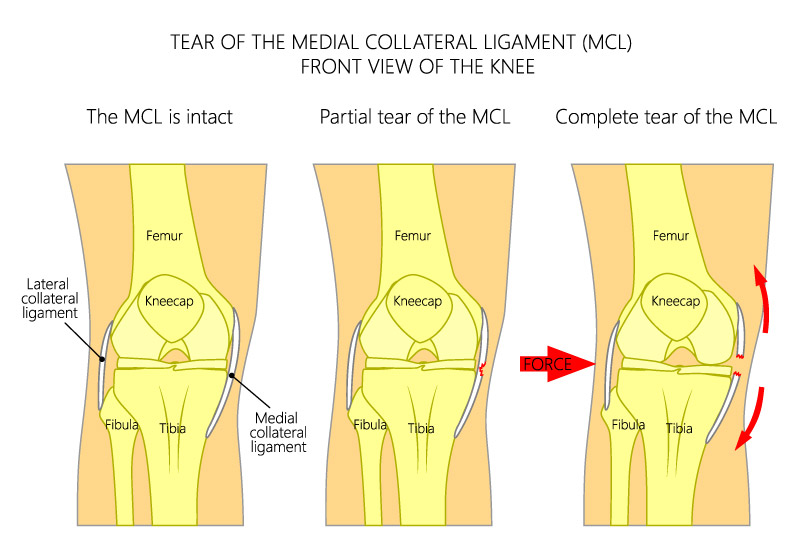MCL Injuries Surgeries

MCL – What is it? How does it get torn/injured? Surgeries to fix it?
The knee is home to four main ligaments that serve to keep the knee joint working properly. The medial collateral ligament, also known as the MCL, is a ligament that is located on the inside of the knee. It is a flat and broad ligament around 10 centimeters in length and is attached to both the femur and the tibia. The MCL, working together with the lateral collateral ligament (LCL) serves to keep the knee from buckling from either side. It’s main purpose, in other words, is to control the movement of the knee from side to side. It is required in order for the knee joint to function properly and patients experiencing MCL trauma could find themselves in significant pain and with lessened mobility.
How does the MCL get torn or injured?
The MCL can be damaged in a few different ways. The most common issue that individuals tend to encounter that leads to this injury is via a force that hits the outside of the knee. More specifically, a strong force that hits the side of the knee joint can cause the ligament to stretch or tear from the unexpected pressure. As a result of this kind of injury, inflammation and pain are extremely common. Depending upon the severity of the injury, more serious issues could arise.
There are three main categories of MCL injuries. Each category corresponds to the severity of the injuries sustained. The first category, grade one, is referenced with relatively minor trauma that does not cause the individual in question much pain or concern. Common symptoms of a grade one MCL sprain or injury include tenderness on the inside of the knee as well as inflammation and light bruising. Note that grade one injuries should not cause instability in the knee joint, allowing the knee to function normally.
Grade two MCL injuries occur when 90% or less of the ligament’s fibers are damaged. The important thing to note here is that the ligament remains intact even if the majority of it is affected. This grade of injury has the potential to cause minor instability in the knee as well as a significant amount of pain, bruising, and swelling. Grade three MCL injuries are the most severe kind of MCL injury – a tear. With a grade three MCL injury, the ligament itself tears (or ruptures) completely. As a result, significant knee instability is inevitable, and patients often find they need the help of a knee brace to move.
How is an MCL tear treated?
Unlike with the anterior cruciate ligament (ACL) tears, MCL tears are typically not treated with surgery. Instead, patients are advised to regularly attend physical therapy sessions to begin to restore strength to the knee and help regain a normal range of motion. If the ligament has torn from the shinbone or thighbone, surgery might be needed to help reattach it, however this is a relatively rare occurrence. The majority of MCL tears can be treated with rehabilitation and physical therapy methods.
